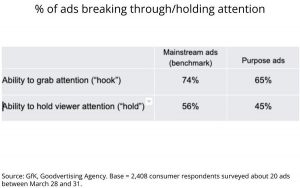— October 2, 2017

fancycrave1 / Pixabay
Key account management (also known as strategic account management) is a proactive approach to not only winning new business but how you do business. It requires organization-wide change and coordination and it is this that differentiates it from a purely sales-driven strategy.
In this article, I want to explore what differentiates a strategic approach to account management from purely sales-driven methodologies.
What is Key Account Management?
Key account management is linked to your wider business strategy as it seeks to grow your profit margins through the establishment of collaborative relationships with customers that represent high value over the long term. These relationships require collaboration, a degree of transparency and senior buy-in from both supplier and customer sides if they are to work. This means building strong and productive relationships across your own organisation as well as building contacts within your customers.
Strategic account management requires a deeper understanding of the challenges and problems your customers face. Only by understanding your customer’s business can you develop convincing value propositions that propose joint strategies and initiatives to tackle or ameliorate these issues and bring the customer on board. In order to achieve results, resources must be diverted to those customers and projects that are the most strategically valuable.
But what is it exactly that defines a high-value customer and how do you go about selecting key accounts?
Defining your High-Value Customers
Only by deeply understanding your customers can you set yourself apart from your competitors by offering what they really need to boost their own sales and profits. This strategic approach to winning and growing new business is not a one-way transaction approach but one that starts by finding commonalities between your business and your customer’s.
But not all customers are created equal and some will represent far more strategic value than others. Whilst it’s tempting to simply pick your key accounts from those customers that drive the most revenue for your business, this approach is one-dimensional and doomed to fail. Your biggest customers may also be your least loyal and most cumbersome to do business with, whilst some of your smaller or medium-sized customers may be experiencing rapid growth that it would be hugely beneficial to tap into sooner rather than later when your competitors are also descending upon them.
Let’s look at some general rules of thumb to bear in mind when it comes to key account selection:
- Growth Potential: Every big business starts off small at some point which is why it’s important to look at current growth and growth potential in your key account selection criteria. Have your customers made any interesting acquisitions? Are they expanding into new markets? Have they achieved a unique brand reputation? All this needs to be considered.
- Behaviour and Loyalty: Your customer might be huge but if they display very little loyalty and are genuinely difficult and demanding to do business with, do you want to be investing in them for the long-term? The volumes may be great but the risk exposure may be greater.
- A Propensity for Innovation: Strategic thinking is part and parcel of key account management and this has to come from both customer and supplier sides. If your customers are sticklers for doing things the way they’ve always been done and bulk at the idea of even mild change, then treat them with caution.
- Willingness for Collaboration: It’s one thing finding potential in a customer but if they don’t show a willingness to sit down and collaborate then you may be flogging a dead horse.
- Perception of Value: What is good for you won’t necessarily be good for your customer in their eyes. Good key accounts will ultimately share your perception of value and how it is delivered.
- Customer Values and Culture: Values and culture aren’t necessarily things you would look at from a sales point of view but they are very strong indicators in key account selection. The more in common you have with another company, the more likely your respective teams will work well together.
Five Core Differences between Key Account Management and Sales
I want to focus in on some of the key differences between a strategic approach to your customer and the more transactional nature of sales based approaches.
- It’s business-wide: Key account management isn’t just about winning new business from your customers but changing the very nature of how you do business with those customers. This links it to overall business strategy and requires buy-in and involvement from various parts of the business outside of sales (HR, IT, operations, etc).
- Value isn’t just related to revenue: Whether it’s raw material costs, locality, adaptability, less waste in the production process, better supply chain management, key account management is about creating long-term value for both you and your customer. The end result will allow you to increase your competitive advantage and move you towards ‘preferred supplier status’ with your key accounts.
- It’s long term, not short term: Strategic account management is built around creating long-term value instead of simply delivering short-term gains that are transactional in nature. By investing in creating stronger relationships you and your key accounts are able to unlock huge strategic value that will ultimately manifest itself in greater profit margin and increased competitive advantage.
- It seeks to establish competitive advantage: Unlike a sales approach which aims to build revenue and profits through an increase in one-way transactional activity, key account management works at a deeper and more strategic level. By tying your success to your customer’s and working at a more collaborative level, you can establish an advantage over your rivals, seeing off any rival bids by positioning yourself as in the know and able to understand and meet your customers’ specific requirements.
- It’s customer-focused: Key account management is a ‘customer first’ philosophy and this means that your success is built around and off the back of your customer’s success. By understanding your customer’s motivations and challenges, you can better address them, helping to ensure you as their preferred supplier for many years to come.
Business & Finance Articles on Business 2 Community
(88)
Report Post





